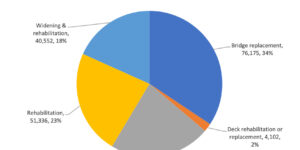Colorado State University, which pioneered seasonal hurricane forecasting 30 years ago, may have issued its last prediction.
The school’s Tropical Meteorological Project needs $150,000 or it will end in February, said Phil Klotzbach, lead author of the forecast. William Gray, professor emeritus of atmospheric science, was the first to predict how many storms would form in the Atlantic during the ocean’s six-month hurricane season.
“Over the years, Dr. Gray has actually put in about $500,000 of his own money to keep the forecast going,” Klotzbach said by telephone from Fort Collins, Colo. “Right now, he is supporting our project.”
The Colorado State forecast is watched closely by the energy, commodity and insurance industries because of the impact hurricanes have on property and markets in the U.S., Mexico and the Caribbean.
The Gulf of Mexico is home to about 6 percent of U.S. natural gas output, 23 percent of oil production and more than 45 percent of petroleum refining capacity, according to the Energy Department. In 2001, Gulf waters accounted for 24 percent of U.S. marketed gas production.
Florida, which has been struck by more tropical systems than any other state, is the second-largest producer of oranges behind Brazil.
Grant Money
In the past, the Colorado State group received grants from the National Science Foundation and the National Aeronautics and Space Administration. Those sources have dried up, Klotzbach said. There has been a struggle to keep private funding as well.
Klotzbach said the hunt for funds hasn’t been helped by this year’s missed forecast. He and Gray called for 18 storms with winds of at least 39 miles (63 kilometers) per hour, eight of which were expected to become hurricanes, three of those major systems.
So far this year, 13 storms have formed, two of which were hurricanes. None grew into a Category 3 or higher major storm.
“It’s hard to ask for money when you have had your worst forecast,” Klotzbach said. “It is like batting .180 and then going into free agency.”
The National Oceanic and Atmospheric Administration also predicted an active season, as did AccuWeather Inc.
Gray’s criticism of climate-change science may also have shut off some sources of funding, Klotzbach said. Gray has repeatedly said he believes many researchers are wrong about climate change and the problem isn’t severe.
Klotzbach said he has cut back to three-quarters time at the university and is taking on other work to make ends meet.
“I’d like to keep working at CSU,” he said.
(Editors: Charlotte Porter, Dan Stets)




















 So…Where Are We Now? VC Viewpoint on InsurTech Funding Trends
So…Where Are We Now? VC Viewpoint on InsurTech Funding Trends  Allstate Thinks Outside the Cubicle With Flexible Workspaces
Allstate Thinks Outside the Cubicle With Flexible Workspaces  New Hampshire High Court Invalidates GEICO Underinsured Claim Provision
New Hampshire High Court Invalidates GEICO Underinsured Claim Provision  Cyber Crime Climbs, 90% of Americans Have Been Targeted
Cyber Crime Climbs, 90% of Americans Have Been Targeted 





